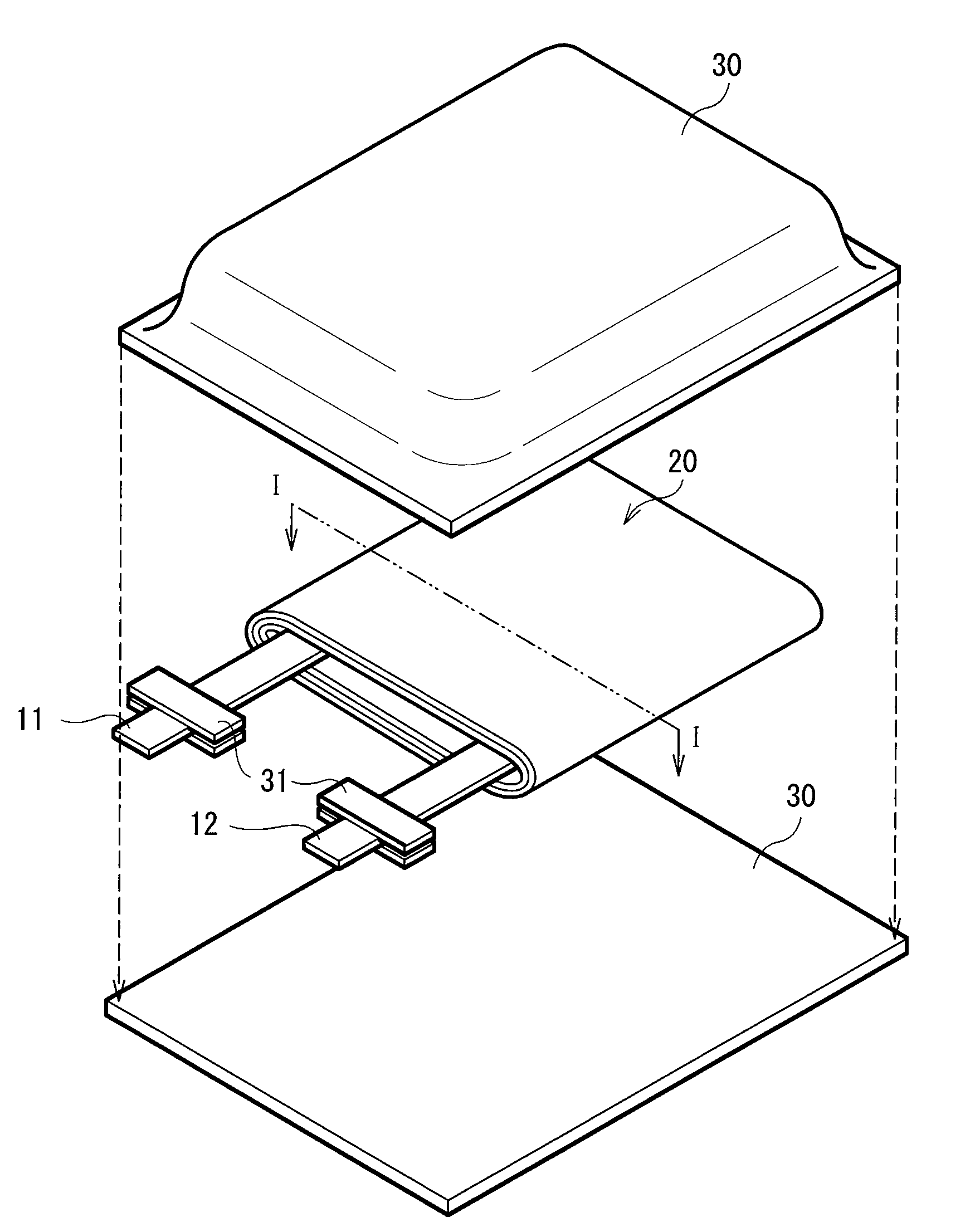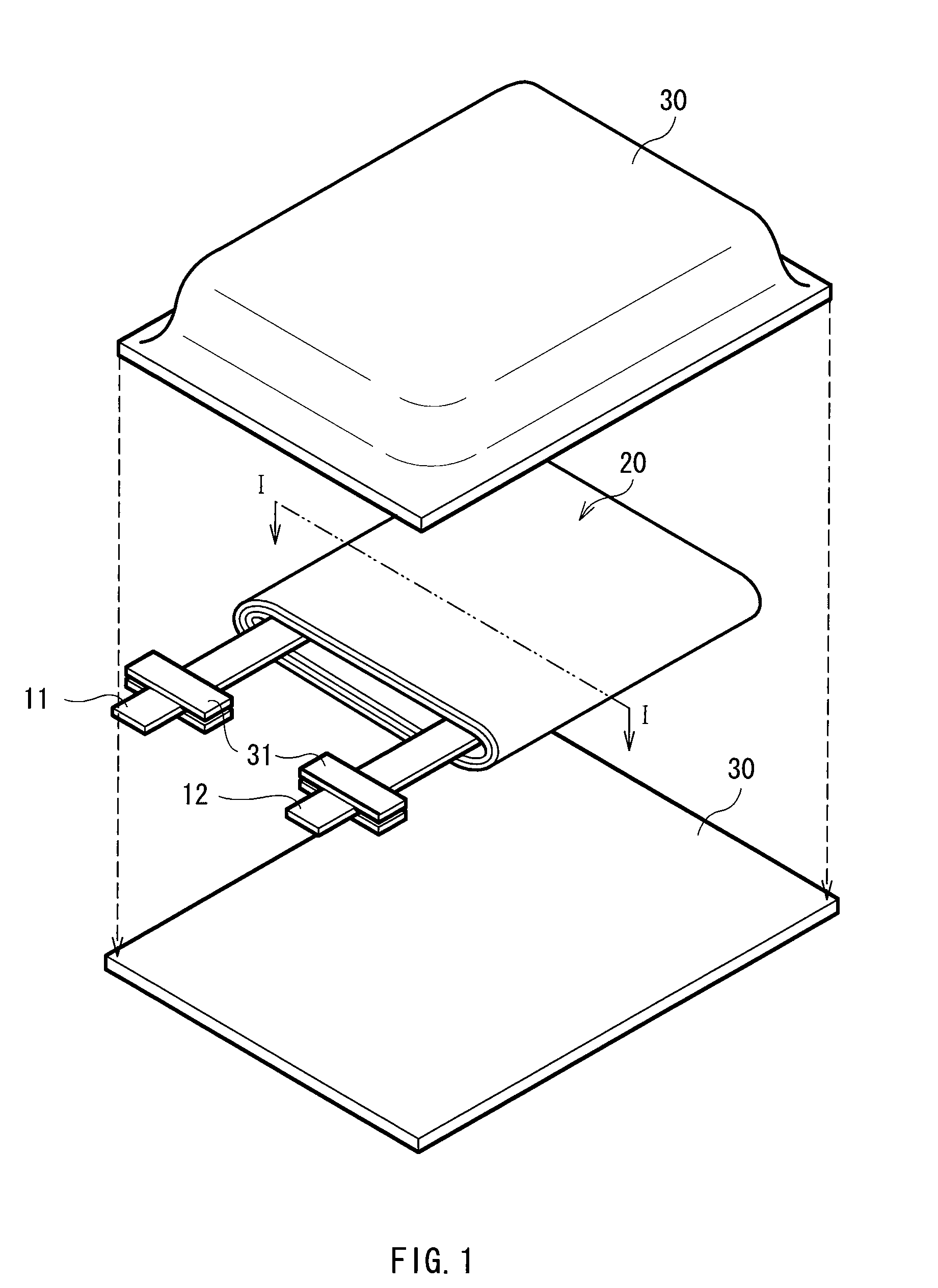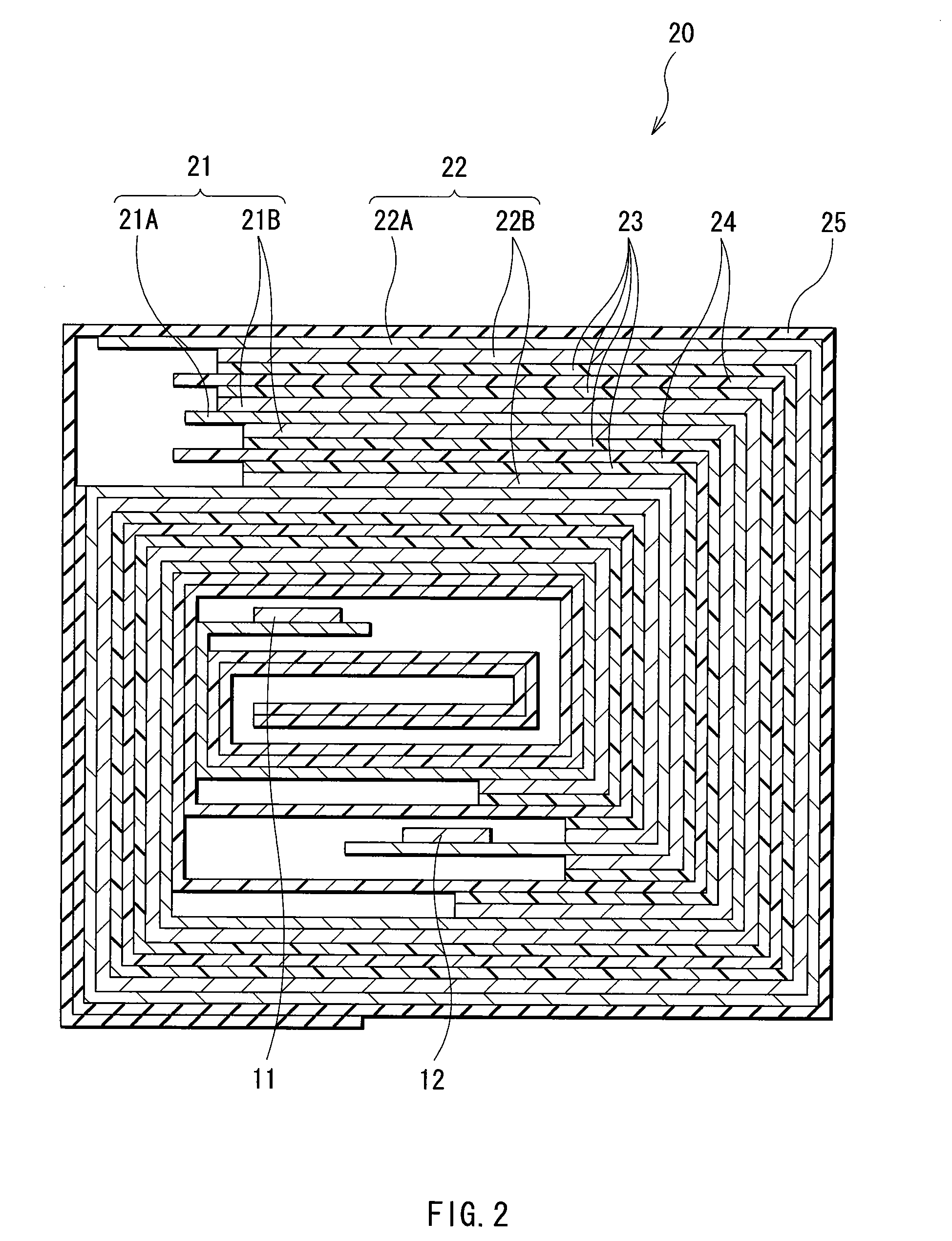Polymer electrolyte and battery
a technology of polymer electrolyte and battery, which is applied in the direction of non-aqueous electrolyte cells, non-metal conductors, sustainable manufacturing/processing, etc., can solve the problems of insufficient content of electrolytic solution, inability to obtain superior ion conductivity, and difficulty in further improving ion conductivity, so as to achieve easy containment, increase the ratio of electrolytic solution, and improve ion conductivity
- Summary
- Abstract
- Description
- Claims
- Application Information
AI Technical Summary
Benefits of technology
Problems solved by technology
Method used
Image
Examples
example 1-1
[0056]The laminated film type secondary battery as shown in FIGS. 1 and 2 was fabricated.
[0057]First, 0.5 mol of lithium carbonate (Li2CO3) and 1 mol of cobalt carbonate (CoCo3) were mixed. The mixture was fired for 5 hours at 900 deg C. in the air to synthesize lithium-cobalt complex oxide (LiCoO2) as a cathode active material. Next, 85 parts by weight of the lithium-cobalt complex oxide, 5 parts by weight of graphite as an electrical conductor, and 10 parts by weight of polyvinylidene fluoride as a binder were mixed to prepare a cathode mixture. The cathode mixture was dispersed in N-methyl-2-pyrrolidone as a dispersion medium to form cathode mixture slurry. Subsequently, the both faces of the cathode current collector 21A made of an aluminum foil being 20 μm thick were uniformly coated with the cathode mixture slurry, which was then dried and compression-molded by a roll pressing machine to form the cathode active material layer 21B, and form the cathode 21. After that, the catho...
examples 2-1 and 2-2
[0068]Secondary batteries were fabricated in the same manner as in Example 1-1, except that as the separator 24, a microporous polypropylene film being 25 μm thick or a polyethylene nonwoven being 25 μm thick was used.
[0069]For the fabricated secondary batteries of Examples 2-1 and 2-2, liquid leakage test was performed and the discharge capacity was obtained in the same manner as in Example 1-1. The results are shown together with the results of Example 1-1 in Table 2.
TABLE 2Capacity inCapacity inLiquid100 mA1500 mAleakage testdischargedischargeSeparator(No. of pcs)(mAh)(mAh)Example 1-1Microporous polyethylene film0511460Example 2-1Microporous polypropylene film0508452Example 2-2Polyethylene nonwoven0501448
[0070]As evidenced by Table 2, according to Examples 1-1 and 2-1, in which the microporous polyethylene film or the microporous polypropylene film as a porous film was used, higher values were shown for the discharge capacity than in Example 2-2, in which the nonwoven was used.
[0...
examples 3-1-3-7
[0072]In Examples 3-1 to 3-6, the polymer electrolyte 23 and secondary batteries were formed in the same manner as in Example 1-1, except that as the electrolytic composition, mixed solution formed by mixing and dissolving polyvinyl formal and an electrolytic solution at a weight ratio of polyvinyl formal:electrolytic solution=1.5:98.5, 2:98, 3:97, 3.5:96.5, 4:96, 5:95 or 6:94 was used. Polyvinyl formal and an electrolytic solution similar to Example 1-1 were used.
[0073]As in Example 1-1, part of the electrolytic composition and part of the formed polymer electrolyte 23 used in Examples 3-1 to 3-6 were extracted and analyzed by GPC dedicated system. In the result, the weight average molecular weights of the polymer electrolyte 23 were larger than that of the electrolytic composition. That is, it was confirmed that polyvinyl formal was polymerized.
[0074]In Example 3-7, a secondary battery in which the content of polyvinyl formal in the polymer electrolyte 23 was 10 wt % was fabricate...
PUM
| Property | Measurement | Unit |
|---|---|---|
| thick | aaaaa | aaaaa |
| thick | aaaaa | aaaaa |
| thick | aaaaa | aaaaa |
Abstract
Description
Claims
Application Information
 Login to View More
Login to View More - R&D
- Intellectual Property
- Life Sciences
- Materials
- Tech Scout
- Unparalleled Data Quality
- Higher Quality Content
- 60% Fewer Hallucinations
Browse by: Latest US Patents, China's latest patents, Technical Efficacy Thesaurus, Application Domain, Technology Topic, Popular Technical Reports.
© 2025 PatSnap. All rights reserved.Legal|Privacy policy|Modern Slavery Act Transparency Statement|Sitemap|About US| Contact US: help@patsnap.com



